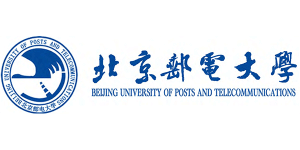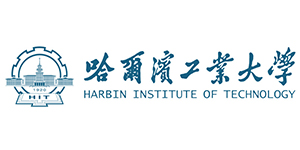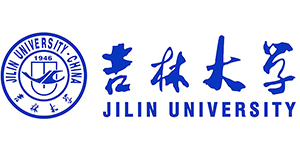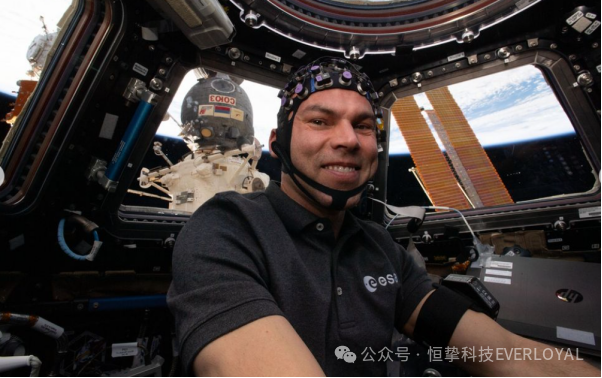

Part.1
Neuroscience milestone: near-infrared technology goes into space!
![]()
![]()
![]()
![]()
![]()
![]()
2023On the night of May 21-22, 2009, AxiomSpace, a NASA-partnered aerospace company, kicked off a space mission in near-Earth orbit of the International Space Station (ISS) (the "Ax-2" mission). During the Ax-2 mission, AxiomSpace collaborated for the first time with Poland's Cortivision, a technology company specializing in the development of portable near-infrared optical brain imaging, to introduce for the first time near-infrared optical functional brain imaging system ("fNIRS") technology for the purpose of monitoring astronauts' brain activity.
To this end, Cortivision has made specific improvements to its PHOTON CAP portable fNIRS equipment to make it more suitable for space conditions, and has been certified and licensed by NASA as a globalfirst houseThe company that performs fNIRS research on the International Space Station.
What is fNIRS ? How does it work in space?
![]()
![]()
![]()
![]()
![]()
![]()
Functional Near Infrared Spectroscopy (fNIRS) is a non-invasive neuroimaging technique that measures changes in oxygenated and deoxyhemoglobin concentrations in the cerebral cortex. fNIRS is often recognized as a promising technology for applications in extreme environmental conditions, such as space flight, because of its safety, portability, and compatibility, and because it is relatively stable to electromagnetic interference or motion artifacts. By using fNIRS, researchers can monitor changes in neural activity in the astronauts' brains, which can help to better understand the effects of space flight on astronauts' behavioral cognition and neurological function.
Prior to the mission, participants will perform an experimental task while fNIRS monitors different areas of their brain. They will then complete the same tasks and measures during the flight at two time points throughout the mission. Upon returning to Earth, the astronauts will again participate in fNIRS monitoring. Thus, brain activity patterns can be analyzed and compared to see if they have changed as a result of the space mission.
The success of the first fNIRS monitoring during spaceflight could open up many new applications for the technology. For example, researchers could use fNIRS to optimize astronaut performance and health during space missions by studying how the brain adapts to spaceflight. In particular, fNIRS could be used to study the effects of isolation, restriction, and other psychosocial stressors that astronauts may experience during long-term missions. In addition fNIRS can be used to study astronauts' brain activity while performing space-critical tasks such as piloting a spacecraft or performing maintenance on the ISS. Finally, as one of the few technologies, fNIRS may be able to monitor changes in brain physiology during a planned expedition to Mars.
On January 18, 2024, Axiom Space and Cortivision continued their collaboration by joining forces on the Ax-3 mission, another remarkable leap forward in space research.
Part.2
Advancing Space Neuroscience
![]()
![]()
![]()
![]()
![]()
![]()



For this space research, Axiom Space and Cortivision joined forces on the Ax-3 mission to the International Space Station (ISS). As an official partner of the mission, Cortivision advanced our understanding of human brain activity in microgravity and played a key role in visualizing brain function. This collaboration marks the second successful mission for Cortivision's equipment to monitor the brain in the unique environment of Low Earth Orbit (LEO).
Axiom Space is a pioneer in commercial spaceflight and has been pushing the boundaries of what is possible in the field of space exploration.Axiom Space is committed to fostering innovation and collaboration, and has recognized from an early age the importance of interdisciplinary partnerships in advancing science.The Ax-3 mission proved the validity of Axiom Space's thinking, advancing our understanding of how the human body responds in microgravity. The Ax-3 mission demonstrated the validity of the Axiom Space idea and advanced our understanding of how the human body responds in microgravity.
Cortivision, an industry challenger in the field of portable neuroscience, has been selected as an official partner for the Ax-3 mission. Building on the success of previous collaborations, Cortivision's equipment will be deployed on the International Space Station to monitor astronauts' brain activity. This marks an important step in the field of human exploration of how the brain functions in microgravity environments.
Part.3
Brain activity monitoring in microgravity
![]()
![]()
![]()
![]()
![]()
![]()
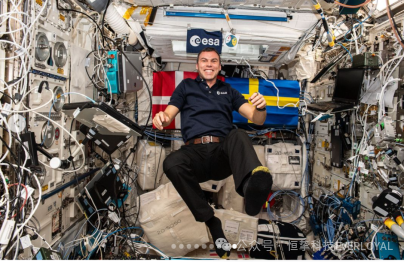


During the Ax-3 mission, the crew will represent their country in low-Earth orbit experiments and perform scientific experiments and demonstration missions of high national importance. More than 30 different experiments will be conducted on board the station, and comparative analysis of data before and after the mission, as well as in flight and on the ground by the crew, will inevitably affect our understanding of human physiology on Earth and in orbit, and will promote scholars to come up with new scientific explanations and to take advantage of industrial advances in order to expand the frontiers of knowledge for humankind.
One of the main goals of the Ax-3 mission is to study the effects of microgravity on brain activity.Cortivision's equipment is designed to accurately measure the relative changes in blood oxygenation, providing valuable insights into the brain's state of cerebral activity in the space environment. This research not only enhances our understanding of human physiology, but also contributes to the development of support strategies for astronauts' mental health during extended space missions.
Cortivision supports the experiment called Orital Architecture, led by KTH Royal Institute of Technology and conducted by Swedish astronaut Markus Wandt. It is well known that architecture plays a crucial role in shaping the natural and social environment and has a direct impact on human health and well-being. The aim of this study was to investigate the effects of the built environment and its properties on astronauts' cognitive abilities, stress levels and stress recovery rates, with the aim of examining the effects of the above factors in the isolated and confined environments of Earth and space-simulated missions, while the same effects have been observed in the space station environment.
Building on previous success: The second collaboration between Axiom Space and Cortivision on the Ax-3 mission builds on the success of previous missions, during which the Cortivision device was used to monitor brain activity in space. With data collected from multiple missions, researchers can identify patterns and trends, paving the way for a more targeted and informed approach to space travel.
Discoveries from the Ax-3 mission have far-reaching implications for the future of space exploration, and understanding how the human brain adapts to microgravity conditions is critical to planning for long-duration missions, such as those to Mars.The collaboration between Axiom Space and Cortivision not only advances our understanding of space medicine, but also helps to develop new technologies to support the physical and mental health of astronauts on future interplanetary missions. The collaboration between Axiom Space and Cortivision not only advances our understanding of space medicine, but also helps develop new technologies to support the physical and mental health of astronauts on future interplanetary missions.



The "Ax-3" research mission to the International Space Station is a groundbreaking collaboration between Axiom Space and Cortivision that demonstrates the power of interdisciplinary, multidisciplinary partnerships to advance space research. As the astronauts progress on the mission, and with Cortivision's innovative equipment, Axiom Space anticipates a wealth of real-world data that will deepen its understanding of how the human brain responds to the challenges of microgravity. This collaboration is not only an important milestone in space exploration, but is expected to shape the future of human space flight.
Axiom Space said: In the collaboration between Axiom Space and Cortivision, we will work together to explore new areas and lay a solid foundation for future neuroscience development. We look forward to working more closely with Cortivision in the future and making greater contributions to scientific research together.
Part.4
Cortivision Wireless Portable Near Infrared Optical Brain Imaging System
![]()
![]()
![]()
![]()
![]()
![]()


The PHOTON CAP device developed by Cortivision is a wireless portable near-infrared brain optical brain imaging system (fNIRS), which is a device that can effectively measure changes in the concentration of hemoglobin in the brain. The device records and analyzes changes in oxyhemoglobin concentration and deoxyhemoglobin concentration in active brain regions during the perception of external stimuli, and speculates on the interrelationships between perceptually active brain regions and their associated brain regions.
The Cortivision PHOTON CAP is a 37-channel device consisting of 16 transmitters (including 4 shortwave transmitters), 10 detectors. The device is wireless, portable, lightweight, safe and highly compatible, and can be used in conjunction with a wide range of devices such as VR, EEG/ERP, oculomotor, and physiological multidetector.
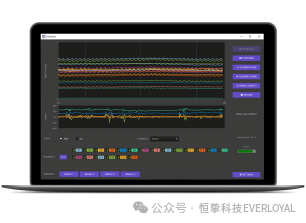





-
Real-time fNIRS and IMU raw data, oxyhemoglobin, deoxyhemoglobin, and total hemoglobin maps; -
No coding is required to go from raw data to results; -
Intuitive graphical user interface; -
Supports .snirf and BIDS formats; -
Has a visualization of the result graph.
Cortivision PHOTON CAP wireless portable near-infrared optical brain imaging system has a wide range of applications and important scientific research significance in the direction of human factors engineering, neuromanagement, neuroengineering management, human-computer interaction, human-computer-environmental systems engineering, environmental behavior, architectural design, and user experience.
Company Profile
Beijing Everloyal technology co., LTDIt is invested by Zhongke (Guangdong) Science Group, relying on Guangdong Human Factors Technology Research Institute and Wuhan Human Factors Engineering Technology Research Institute, and is a new type of high-tech enterprise based on the direction of psychological human factors, driving human factors, biomechanics, user experience, virtual reality and other directions, integrating production, research and development, sales and technical services, and has been selected as a national high-tech enterprise, a science and technology-based small and medium-sized enterprise, and a high-tech enterprise on the list of Zhongguancun. High-tech enterprise list.



Hengzhi Technology independently researches and develops driving human factors system, virtual reality graphical editing software, light environment psychological evaluation system, psychological and human factors experimental teaching system, and at the same time as the general agent of Poland Cortivision near infrared, Russia Mitsar EEG and Germany Eyelogic eye movement instrument in China, Italy BTS surface electromyography and other biomechanics and gait analysis scientific research products general agent. We are also the sole agent of QuaeroSys tactile stimulation system from Germany, Noldus behavioral science from Netherlands, Tobii eye-tracking device from Sweden, MindMedia physiology and biofeedback from Netherlands, Biopac physiology from USA, and ETT olfactory/gustatory stimulation device from USA. We have served Tsinghua University, Peking University, Beijing Normal University, Northeast Normal University, Yanshan University, Xi'an University of Architecture and Technology, Northwest Agriculture and Forestry University, Shenzhen University of Technology, Xi'an University of Science and Technology, Shanghai Jiaotong University, Xinjiang Normal University, Qiyuan Laboratory, China Electronics Technology Group 27, China Electronics Technology Group 28, Huawei Technology, InkScan, NetEase, Aerospace Second Academy, and so on. 1000 colleges and universities, research institutes and enterprises and institutions, and continue to carry out in-depth cooperation in talent training, production and research cooperation, and transformation of achievements.











